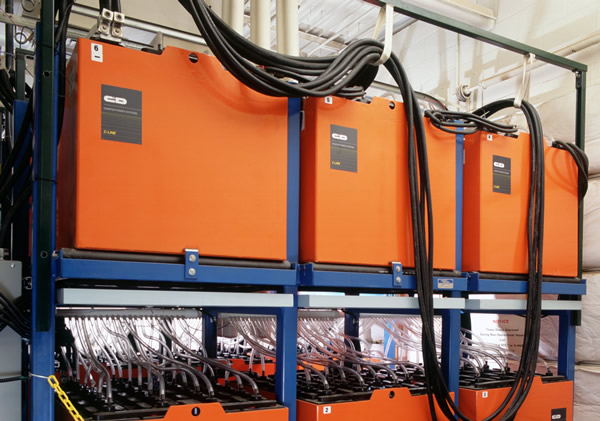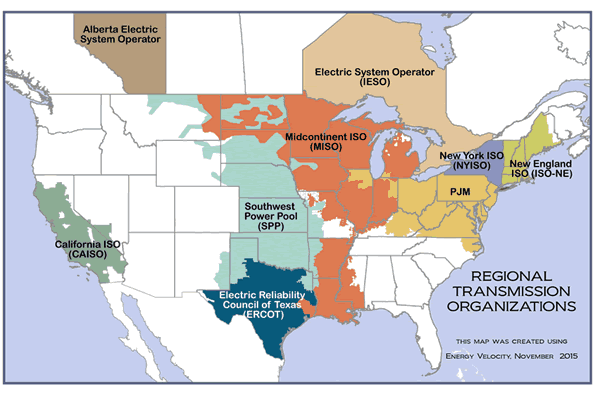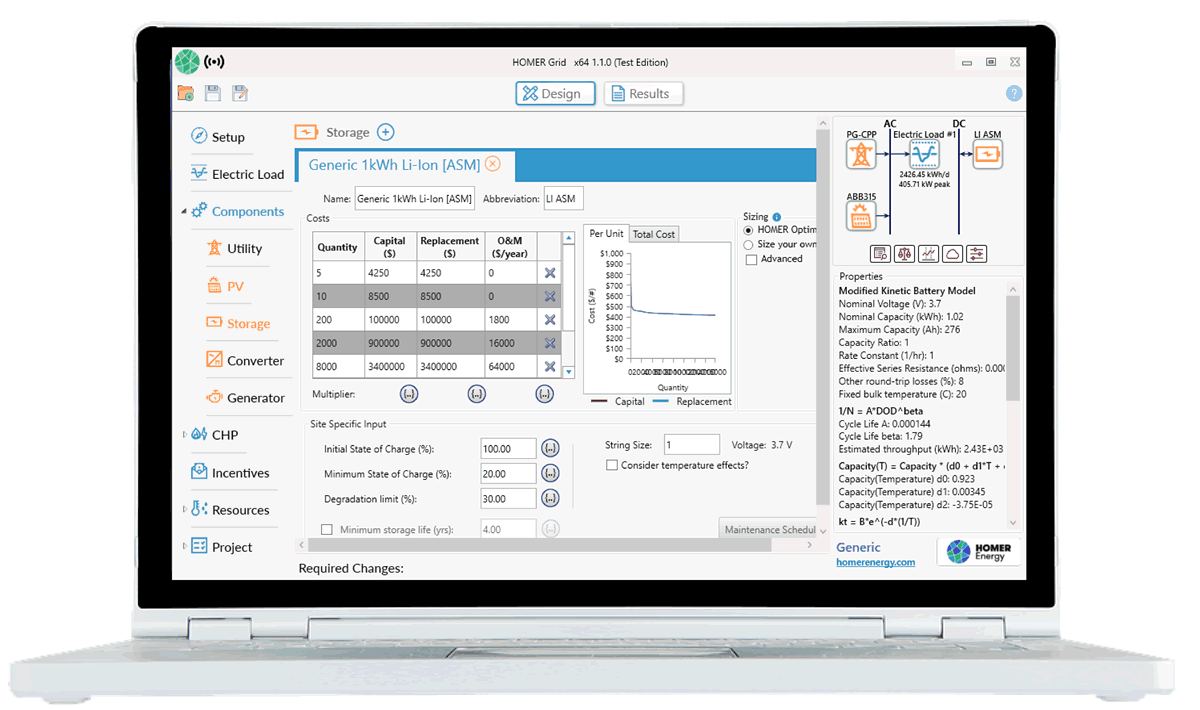Understanding the financial benefit to adding solar, storage, or a combination of the two to grid-connected distributed energy systems in order to reduce demand charges caused by peak energy usage is a major challenge. It’s often clear that solar plus storage could help the problem, but it’s difficult to understand exactly how to accomplish this and how to calculate the overall economics of these systems. HOMER Energy released HOMER Grid in early 2018 in order to provide a robust modeling tool for understanding this problem. In this article we cover a use case for HOMER Grid in New England:
Leidos, a company that uses information technology (IT) and engineering to solve complex customer problems, is using HOMER Grid to illustrate the financial value of solar-plus-storage investments for commercial and industrial customers, and calculate how complex state and utility incentives play into those assessments. Leidos is working with utilities to help them adapt to new energy technologies and rapid changes in the regulatory landscape, such as the inclusion of energy storage in the recently approved Massachusetts Three Year Energy Efficiency Plan. One of their customers is the UK-based New England distribution utility National Grid.

Leidos Industrial Energy Program Director Ronald Gillooly believes that HOMER Grid is a useful communication tool for diverse stakeholder groups involved in energy management. It can help them understand the technical and financial implications of distributed energy projects and their potential impact on on utility-customer relationships. Gillooly says “Energy storage is the topic of many industry-related energy discussions. Many C&I customers are talking about this now, so we want to be able to quantify the impacts,” says Gillooly.
The HOMER Grid software models different sizes and combinations of grid-tied generation resources, such as solar PV, battery storage, inverters and CHP – to mention a few – and ranks the systems based on optimal engineering and economic results. By incorporating a North American utility tariff database, the software also accounts for the local variation in the structure of electric rates that impacts distributed energy investment decisions. HOMER Grid also has the ability to create custom tariffs, and in the case of the Leidos modeling, the software is accounting for complex incentives available in New England for battery storage, renewable energy and participation in demand response programs.
Modeling Demand Response Savings with HOMER Grid
Distributed energy investments, especially including storage, can help utility customers save money in a variety of ways. The most important savings often come from a reduction in demand charges. While there is tremendous variety from state to state and from one utility to the next in the way these charges are calculated, they are all generally aimed at ensuring there is enough power available on the system for everyone. Demand charges are based on the customer’s maximum energy consumption in the previous month or year. Often that is in addition to the higher seasonal or time-of-day rates during system peak periods. It is mostly commercial and industrial customers that pay demand charges, although that may be changing as some utilities explore demand charges for residential customers.

In terms of managing peak demand on the grid, that is the combined responsibility of the Regional Transmission Organization – if there is one in the area – along with utilities and electric cooperatives. It is far less expensive for utilities to reward customers who can lower their electric demand – even by a little – than to pay for additional generation resources such as power plants or upgrades to the grid. The peak periods that utilities must plan for are roughly similar from year to year, and with modern weather forecasting, the utility can often give advance warning, usually a day ahead, of when peaks will occur. Although there are some winter peaks, most peak periods in the United States and Canada occur during the summer when the combination of heat and humidity prompts widespread air conditioning use. Combined with a daily peak demand for electricity in the late afternoon, that creates a maximum load on the system at predictable times.
To encourage their commercial and industrial customers to reduce demand during these critical hours, utilities have evolved a variety of strategies. Aside from levying capacity and demand charges, they also offer incentives, in the form of demand response contracts, to those customers who can reliably reduce their electric consumption when called upon.
Depending on the electric load profile and type of business, commercial customers have a variety of strategies available for reducing peak demand. They can raise office air-conditioning thermostat settings by a few degrees, use higher set points for chillers and refrigeration resources, or curtail lighting and energy intensive motors during peak hours. Small adjustments made by multiple companies during system peaks can add up to a large reduction in electricity demand for a utility service area or even an entire regional power grid, avoiding expensive investments in new power plants and saving everyone money.
This is why National Grid, which operates as a retail distribution utility in Massachusetts, Rhode Island and New York, is offering its customers a variety of programs to reduce electric demand during “peak events.” It offers incentives for small businesses and residential users to adjust their thermostats, and it pays larger commercial and industrial users even more to make big cutbacks in energy use.

Capturing Storage Incentives Using HOMER Grid
Aside from temporarily cutting back energy consumption, commercial and industrial customers can reduce peak demand – and demand charges – by generating their own energy. Some industrial customers simply turn on diesel engines to avoid peak utility pricing, but that strategy often conflicts with air quality regulations and is becoming more expensive as states impose stricter regulations on fossil generation and offer new financial rewards for clean energy.
While many states have renewable energy incentives, only a few – notably Massachusetts, California, and New York – are moving forward with storage goals and incentives. Commercial electricity customers can take advantage of these programs to lower the cost of their initial investment, rely on self-generated energy to lower costs during system peaks, and even sell their clean energy into capacity markets.
Encouraging energy storage helps shift usage to off-peak periods, providing important financial savings for utilities, which they pass on to their customers. In an initial 2016 study of the benefits of energy storage, Massachusetts calculated that investing in 600 MW of storage would be achievable given current market and regulatory realities, and still save ratepayers $800 million by 2025. Not only that, Massachusetts policymakers believe storage has other strategic values such as the ability to improve grid operations and provide backup power through storms, all of which can benefit local economies. Now the state has increased its storage goals to 1,000 MW. Meanwhile, New York a storage goal of 1,500 MW by 2025.
“Working with Leidos, and using the historical load data they provided, we were able to model NGRID’s DR Connected Solutions Program and other complex incentives like Installed Capacity (ICAP) and New England ISO’s Forward Capacity Market (FCM) incentive in Massachusetts,” said Associate Product Manager Aarabi Madhavan. “That includes the value of storage investments as well as incentives for participating in demand response programs during “peak events.”
Gillooly hopes that the use of the HOMER Grid tool will provide enhanced services to New England utilities and their customers. “How you assess all the potential value streams for these new technologies can be challenging. With HOMER Grid you can model all these things,” says Gillooly. “I’m not sure there’s any other tool that can do this.”

Hi,
Are you aware of and utilising supercapacitor energy storage modules in your modeling programmes.
Hi David, thank you for your comment. Supercapacitors are a very interesting storage technology for applications requiring storage duration measured in seconds. Although most HOMER models use hourly or 15-minute timesteps, it can go down to 1-minute. However, it isnât appropriate for modeling at the 1-second level.